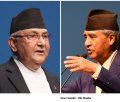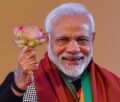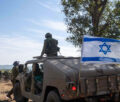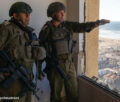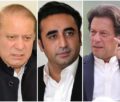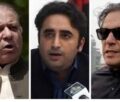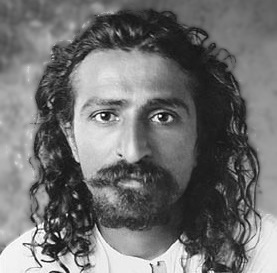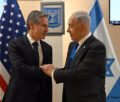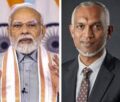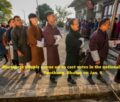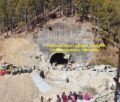Is US serious of smoking out Osama bin Laden?

Osama bin Laden still remains elusive. For close to a decade there has been a big hunt for the al Qaeda leader dead or alive with a $25 million price on his head. The Americans hold him responsible for the murder of over 3000 people who perished when the twin towers in New York were attacked by his ‘flying’ suicide squad in September 2001.
Occasionally, there has been speculation over his whereabouts; more often as a game of wild guess and wilder accusations. Thus, the Pakistanis have said that he was more likely to be in Bangalore or Hyderabad, both in India, than any Pakistani city; some in America said he was in Iran and, not to be outdone, the Iranians shot back by saying that he is lodged in a safe house on Pennsylvania Avenue, Washington D.C! Point is there has never been anything definitive enough to launch an operation for his capture, according to the Pentagon.
Now, the Secretary of State, Hillary Clinton, says that there are people in the Pakistani establishment who know about bin Laden’s whereabouts. She does not say who these people are but rules out the possibility of anyone in the present government in Islamabad being aware of the location of bin Laden.
If past experience is any guide it would be futile to dwell too much on Hillary’s remarks. Any how she has clearly (cleverly?) absolved the Zardari government of any complicity in shielding the al Qaeda supremo. The American prevarication on Pakistan, especially its role in nurturing global terrorism, is an accepted fact. The Obama administration is particularly unwilling to be harsh with the ‘frontline ally’; it is desperate to enlist Islamabad’s help in getting out of Afghanistan. It is absurd to aver that Americans are unaware that the Pakistanis regularly double cross them; they bear the pain in the hope that it will help achieve their short-term goal of running away from Afghanistan.
Yes, it does build up frustration within, which finds its way out in occasional ‘blunt’ remarks such as the ones spoken by Hillary Clinton —and then retraced as part of a familiar fire-extinguishing exercise to assuage Pakistani sentiments hurt by an occasional blunt remark.
It is this ambivalent attitude of the Americans that has made sure that Osama bin Laden remains elusive—and safe. Some people suspect that the Americans no longer think that bin Laden would be a big catch since the terrorist organisation that he heads has morphed into hundreds of smaller and autonomous branches which need no logistic, monetary or moral support from the bin Laden empire.
For years after 9/11, the US deliberately chose to point to his location in vague terms–as vague as the porous Afghanistan-Pakistan border. They were not willing to say that he was hiding within the landmass of Pakistan. If the Americans wanted they could have seen some obvious reasons why bin Laden would be in Pakistan, a country that offered him a much safer, almost assured, sanctuary than ‘foreign occupied’ Afghanistan or its lawless border areas near Pakistan.
There was and still is a heavy presence of American and international troops on Afghan soil, particularly in areas close to the Pakistani border. These foreign troops would have spared no effort to hunt down bin Laden if they had a clue about his presence in any corner of Afghanistan.
On the other hand, till recently there was hardly any military presence on the Pakistani side of the Afghanistan-Pakistan border. Lately, Pakistani troops moved in and launched a selective offensive against terrorists in the area. Bin Laden had plenty of time to move away from the danger zone to one of the safe havens in a Pakistani city.
Over a year ago, geographers at the University of California had done an exercise to locate bin Laden. They had used satellite imagery and some other inputs, including available intelligence reports. Their conclusion: City of Parachinar in the Hindukush mountains, part of the Khurram Agency of the north-western Pakistan, is the most likely hideout of the world’s most-wanted terrorist. Parachinar is about 12 miles from the last known address of bin Laden in the Tora Bora mountain.
The UCLA exercise even pinpointed three buildings where bin Laden, a kidney patient with a 6’4 or 6’6-feet frame, was likely to be ensconced. His medical condition ruled out his migration to a remote and isolated tribal belt of Pakistan. Apart from Parachinar, a least 15 other locations were listed as likely bin Laden sanctuaries.
By last year, the Americans had started their drone attacks but no drones were sent over Parachinar or other areas where UCLA geographers felt he could be hiding. Osama bin Laden, in the meanwhile, could well have been moved to another safe area such as Peshawar or Muzaffarabad where the surroundings of a large civilian population—not to mention the overwhelming anti-Americanism—would have acted as a safe net against any American drone attack on his hideout.
Intelligence gathering by electronic devices has been advancing fast and has proved to be quite accurate and effective. For instance, his walkie-talkie was the give away to his last-known address in the Tora Bora caves. The electronic snooping over bin Laden is bound to have increased a lot since those days.
Yet, he has been successfully dodging the efforts to find and capture him with the help of certain ‘elements’ in Pakistan as US Secretary of State remarked unable to control her anger immediately after Faisal Shahzad’s plot to blow up the Times Square was discovered and his trail led investigators to FATA and the Waziristan region of Pakistan.
President Brack Obama’s new national security doctrine offers enough reasons for celebrations in the Osama camp. In fact, bin Laden can breathe easily and live safely as long as his health permits.
Firstly the Democrat President has scrapped his predecessor’s war on terror doctrine. Secondly, pre-emptive strikes are ruled out as a weapon in the American armoury. His 52-page annual national security policy statement ( sent to Congress as required under a 1986 law) clearly lays stress on expanding international partnerships saying ‘Our long-term national security will not come from our ability to instil fear in other peoples, but through our capacity to speak to their hopes’.
Surprisingly, President Obama is not unaware of the continued threat from Al Qaeda and its affiliates. He also unhesitatingly acknowledges their presence in Fata and Waziristan, if one goes by the transcript of his press conference in Washington shortly after his security doctrine was released.
And how does he want to dismantle the network of extremists that are willing to attack US? Let me quote the President rather paraphrase his remarks. ‘We’ve also got to work with Pakistan so that they are more effective partners in dealing with the extremists that are within their borders’.
Well, the Obamaism doesn’t surprise. It is, indeed, in synch with the known American mutli-speak on matters terrorism and Pakistan.
Like, the concern over Quetta Shura of Mullah Omar, for instance. ISI facilitated the transfer of one-eyed Mullah and his colleagues to the Balochistan capital after the fall of Taliban regime in Kabul with the CIA in the loop. And the airfields near Quetta are the launch pads for the US drone attacks on Waziristan and Fata. Any doubt?
-
Book Shelf
-
 Book Review
DESTINY OF A DYSFUNCTIONAL NUCLEAR STATE
Book Review
DESTINY OF A DYSFUNCTIONAL NUCLEAR STATE
- Book ReviewChina FO Presser Where is the fountainhead of jihad?
- Book ReviewNews Pak Syndrome bedevils Indo-Bangla ties
- Book Review Understanding Vedic Equality….: Book Review
- Book Review Buddhism Made Easy: Book Review
- Book ReviewNews Elegant Summary Of Krishnamurti’s teachings
- Book Review Review: Perspectives: The Timeless Way of Wisdom
- Book ReviewNews Rituals too a world of Rhythm
- Book Review Marx After Marxism
- Book Review John Updike’s Terrorist – a review
-
-
Recent Top Post
-
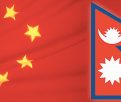 Commentaries
Impasse over BRI Projects in Nepal
Commentaries
Impasse over BRI Projects in Nepal
-
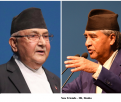 CommentariesNews
Yet another Musical Chairs in Kathmandu
CommentariesNews
Yet another Musical Chairs in Kathmandu
-
 CommentariesTop Story
Spurt in Anti-India Activities in Canada
CommentariesTop Story
Spurt in Anti-India Activities in Canada
-
 NewsTop Story
Nepal: Political Stability Under Threat Again
NewsTop Story
Nepal: Political Stability Under Threat Again
-
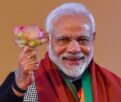 NewsTop Story
Accountability Tryst With 2024 Ballot….
NewsTop Story
Accountability Tryst With 2024 Ballot….
-
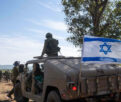 NewsTop Story
What Would “Total Victory” Mean in Gaza?
NewsTop Story
What Would “Total Victory” Mean in Gaza?
-
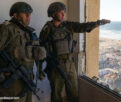 CommentariesTop Story
The Occupation of Territory in War
CommentariesTop Story
The Occupation of Territory in War
-
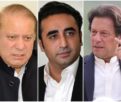 CommentariesTop Story
Pakistan: Infighting in ruling elite intensifies following shock election result
CommentariesTop Story
Pakistan: Infighting in ruling elite intensifies following shock election result
-
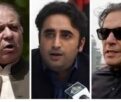 CommentariesTop Story
Proforma Polls in Pakistan Today
CommentariesTop Story
Proforma Polls in Pakistan Today
-
 CommentariesTop Story
Global South Dithering Away from BRI
CommentariesTop Story
Global South Dithering Away from BRI
-
AdSense code



